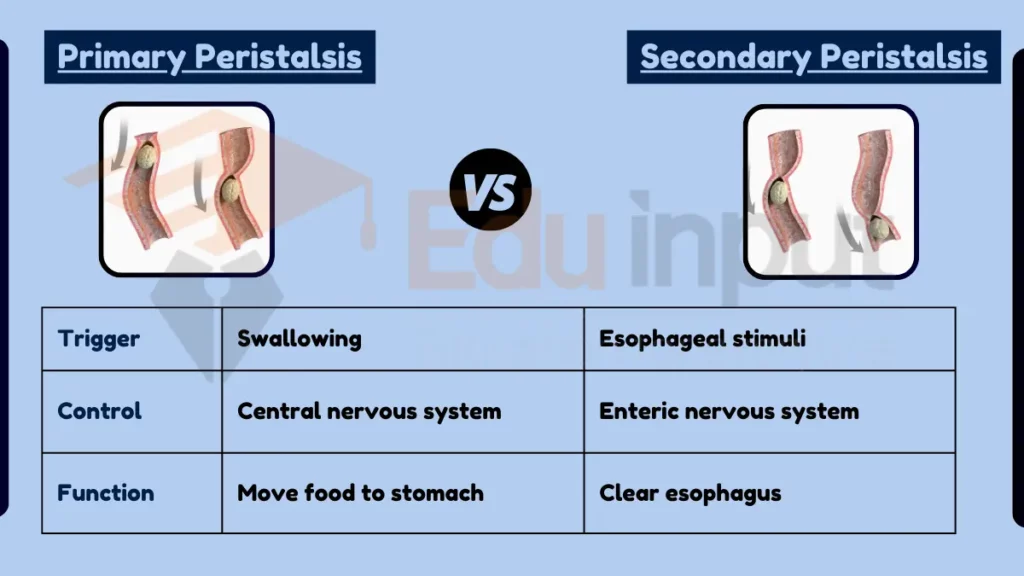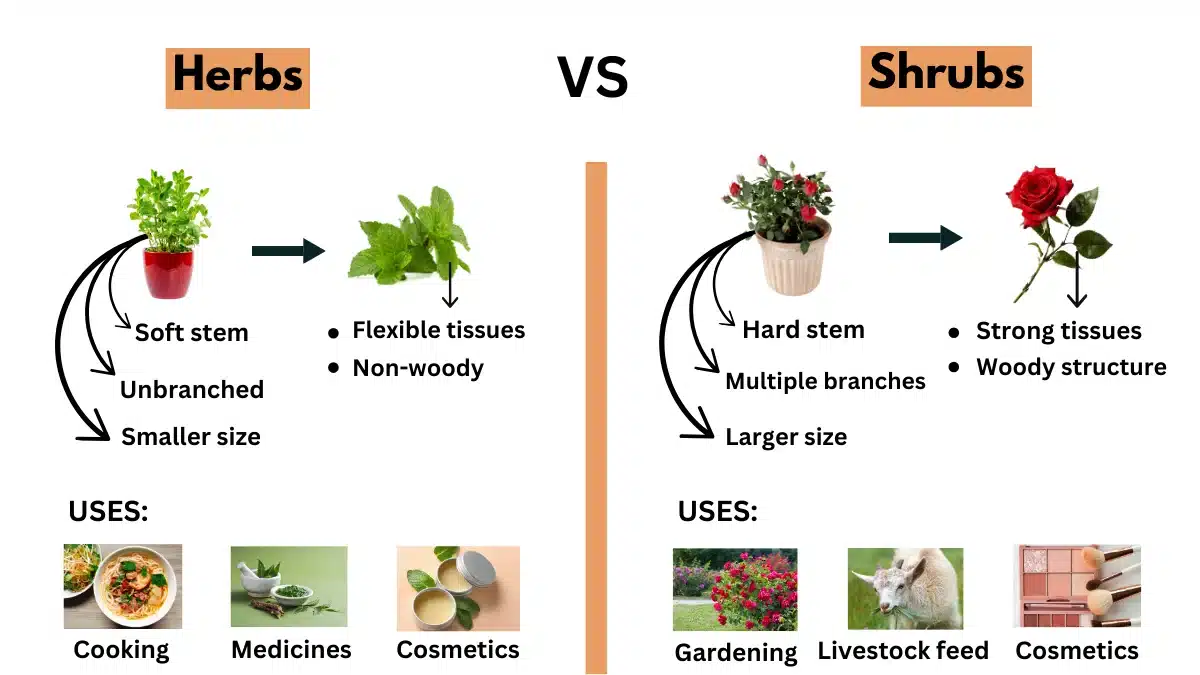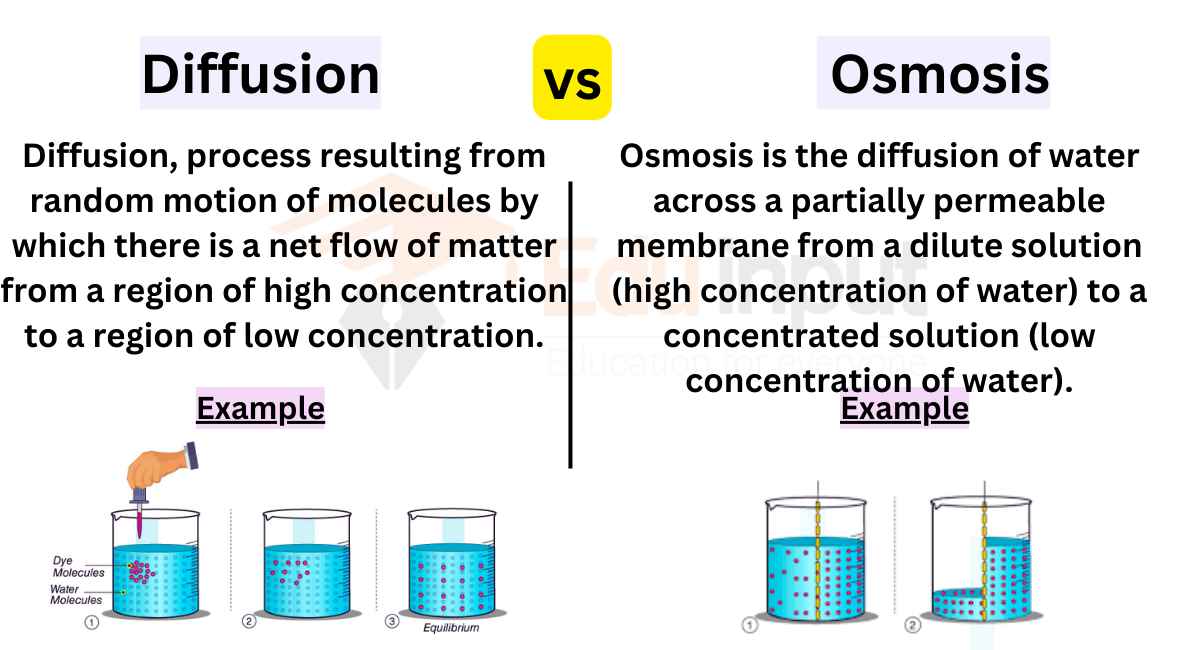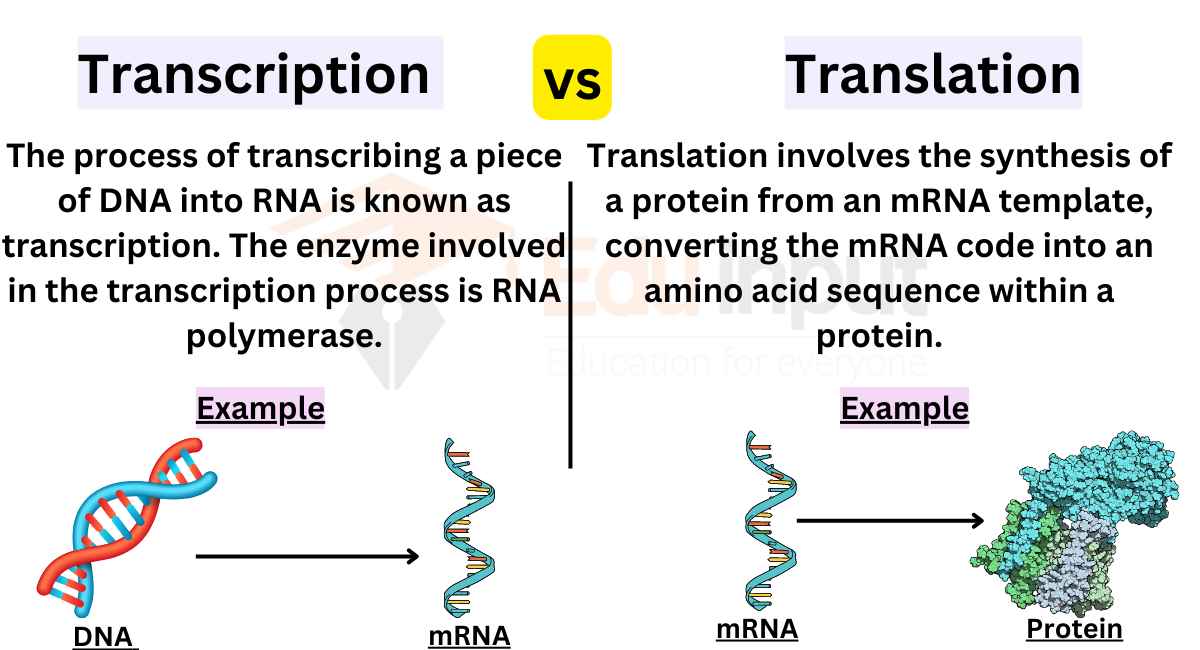Difference Between Primary and Secondary Peristalsis
Key Difference
Primary and secondary peristalsis are both mechanisms of moving food through the esophagus to the stomach, but they differ in their triggers and regulatory mechanisms. Primary peristalsis is a continuation of the swallowing reflex initiated in the pharynx.
It is a coordinated, sequential contraction of muscles to push food down the esophagus. Secondary peristalsis, on the other hand, is not directly initiated by swallowing. It occurs in response to the presence of residual food or irritation in the esophagus, often as a corrective mechanism to clear the esophageal passage.

Comparative Analysis
- Trigger:
- Primary Peristalsis: Initiated by swallowing.
- Secondary Peristalsis: Initiated by leftover food or irritation in the esophagus.
- Control and Regulation:
- Primary Peristalsis: Controlled by the central nervous system as part of the swallowing process.
- Secondary Peristalsis: Controlled locally by the enteric nervous system.
- Function:
- Both serve to move food from the esophagus to the stomach.
- Occurrence:
- Primary Peristalsis: Occurs with each swallow.
- Secondary Peristalsis: Occurs as needed, in response to stimuli.
- Role in Digestive Process:
- Primary Peristalsis: Essential for normal swallowing.
- Secondary Peristalsis: Corrective mechanism to ensure esophageal clearance.
Table Summary
| Feature | Primary Peristalsis | Secondary Peristalsis |
|---|---|---|
| Trigger | Swallowing | Esophageal stimuli |
| Control | Central nervous system | Enteric nervous system |
| Function | Move food to stomach | Clear esophagus |
| Occurrence | With each swallow | As needed |
| Role | Normal swallowing | Corrective clearance |
Also Read:







Leave a Reply